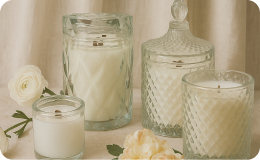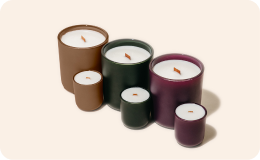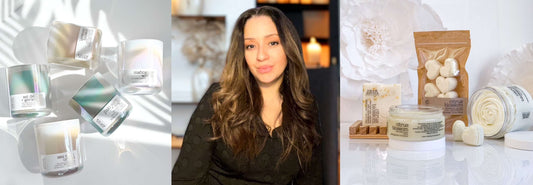Candle Burn Testing 101
Are you new to candle making? Do you have a candle making business and want to make your candles JUST right? You’ve come to the right place!
One of the first and most important steps in your candle making journey will be conducting burn tests. This ensures the best performance of your candle with your chosen wax, fragrance load, and fragrance type.
Each fragrance, fragrance load, and wax type will perform a little differently due to naturally occurring compounds in the elements. Because of this, it’s important to conduct a new burn test when changing anything about your candle.
when to conduct a burn test
This includes any scenario in which your recipe is altered:
- When creating a brand new candle recipe
- Adding dyes or micas
- Increasing fragrance load
- Add enhancers or wax additives
- Changing wax blends
- Or using a new fragrance
Additionally, it’s important to conduct a separate burn test for every different combination that you have and every different fragrance as each may perform differently. For example, you have 4 scents and want to add micas to 2 of them. You’ll want to conduct a burn test for your 2 separate scents, then for your 2 scents with micas added.
Once you’ve nailed down your starting fragrance load, fragrance, wax, and vessel size. Begin with the Wick Sample Kit and reference our Wick Selection Guide to obtain recommendations for which wick to begin testing.
how to conduct candle burn tests
-
Trim the wick to 1/8″ – 3/16″ / 3.2mm – 4.8mm--this is extremely important.
-
Place candles on a heat-resistant surface in a safe, draft-free, undisturbed space with moderate ambient temperature.
-
Light the candles and note the time. Do not leave candles unattended.
- After two hours observe the melt pool. At this point, the melt pool should have reached the full diameter of the candle.
-
If it has not reached the edges, it’s likely that the wick is too small or the wick was too long when lit.
-
If you don’t have a full melt in 2-3 hours, you’ll want to move up in wick width first. For example, if the .375 didn’t give a full melt, move to a .5 in the same thickness.
-
Record the details of the melt pool, the flame height, and any smoking or sooting. (We suggest taking a photo for easy reference.)
-
After four hours, take note of the details once again and extinguish the candle. The melt pool should reach the edge of the vessel and be ½” / 12.7mm deep.
-
If the melt pool is deeper than ½” / 12.7mm, or if the flame is too high, the vessel is too hot, or there is any sooting, the wick is too big.
-
Let the candle cool completely for several hours and repeat the steps above. Before each lighting of the wooden wick, be sure to gently tap off any ash or burnt-top edge.
- Repeat until the candle has burned to the end of its life cycle.
It’s important to conduct your tests thoroughly and through the end of the lifecycle of your candle to make sure that the candle burn safely.
For more information about candle safety, check out our top candle safety tips.
You might also find this article helpful on determining candle burn time.
Happy making!









